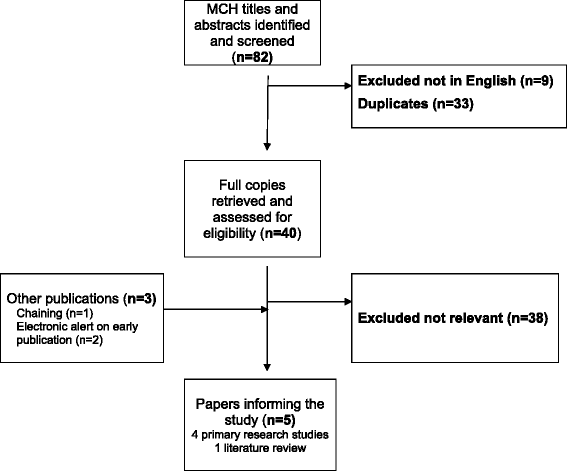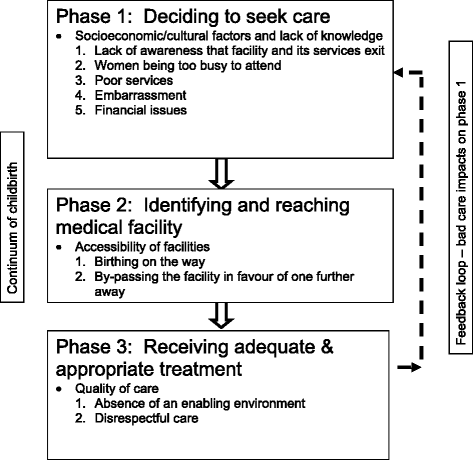Staff perspectives of barriers to women accessing birthing services in Nepal: a qualitative study
- PMID: 26133977
- PMCID: PMC4488114
- DOI: 10.1186/s12884-015-0564-6
Staff perspectives of barriers to women accessing birthing services in Nepal: a qualitative study
Abstract
Background: Nepal has made significant progress with regard to reducing the maternal mortality ratio but a major challenge remains the under-utilisation of skilled birth attendants who are predominantly facility based. Studies have explored women's views of the barriers to facility birth; however the voices of staff who offer services have not been studied in detail. This research explores the views of staff as to the key reasons why pregnant women do not give birth in a maternity-care facility.
Methods: This mixed methods study comprised qualitative interviews and non-participant observation. The study was conducted in two small non-governmental hospitals, one semi-rural and one urban, in Kathmandu Valley. Twenty interviews were conducted with health care providers and other staff in these hospitals. The interviews were undertaken with the aid of a Nepali translator, with some interviews being held in English. Twenty-five hours of non-participant observation was conducted in both maternity hospitals . Both observation and interview data were analysed thematically. Ethical approval was granted by the Nepal Research Health Council and Bournemouth University's Ethics Committee.
Results: Key themes that emerged from the analysis reflected barriers that women experience in accessing services at different conceptual levels and resembled the three phases of delay model by Thaddeus and Maine. This framework is used to present the barriers. First Phase Delays are: 1) lack of awareness that the facility/services exist; 2) women being too busy to attend; 3) poor services; 4) embarrassment; and 5) financial issues. Themes for the second Phase of Delay are: 1) birthing on the way; and 2) by-passing the facility in favour of one further away. The final Phase involved: 1) absence of an enabling environment; and 2) disrespectful care.
Conclusion: This study highlights a multitude of barriers, not all of the same importance or occuring at the same time in the pregnancy journey. It is clear that staff are aware of many of the barriers for women in reaching the facility to give birth, and these fit with previous literature of women's views. However, staff had limited insight into barriers occuring within the facility itself and were more likely to suggest that this was a problem for other institutions and not theirs.
Figures
References
-
- UN Millenium Project . Investing in Development: A Practical Plan to Achieve the Millennium Development Goals. Overview. New York: United Nations Development Programme; 2005.
-
- Ajit P, Hari AR, Gokarna R, Bharat B, Pavalavalli G. Nepal-Family Health Survey. Kathmandu: Minstry of Health, Nepal; 1997.
-
- World Health Organization, Unicef, United Nations Population Fund and World Bank . Trends in Maternal Mortality: 1990 to 2010. WHO, UNICEF, UNFPA and The World Bank Estimates. Geneva: World Health Organization; 2012.
Publication types
MeSH terms
LinkOut - more resources
Full Text Sources
Other Literature Sources



